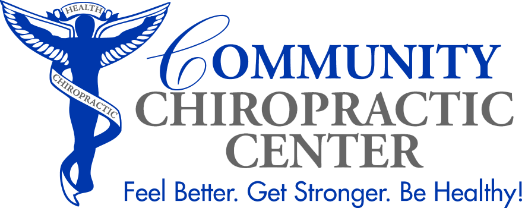Migraine Treatment in Blue Bell and Spring House
 Most people will suffer from one form of headache or another throughout their life. While one singular cause for headaches has yet to be identified, science has determined that most initially stem from issues throughout our neck and back. Finding a chiropractor for your migraines can help you feel the relief you have been missing!
Most people will suffer from one form of headache or another throughout their life. While one singular cause for headaches has yet to be identified, science has determined that most initially stem from issues throughout our neck and back. Finding a chiropractor for your migraines can help you feel the relief you have been missing!
A skilled and experienced chiropractor specializing in head pain relief can help you identify which type of headache you are dealing with and where your treatment can start. Our chiropractors can find the source of your migraines at Community Chiropractic Center and help you begin to feel a sense of relief.
Most headaches are caused by underlying and secondary issues that chiropractors specializing in migraines are trained to find. For example, in cases of cervicogenic headaches, the pain starts in your neck and radiates upwards through your head.
Chiropractic Care Treatments for Migraines
Chiropractic care focuses on the body’s musculoskeletal and nervous systems, emphasizing the importance of spine health in overall well-being. For migraine sufferers, chiropractic treatments can be a game-changer. Techniques such as spinal manipulation, massage, and mobilization aim to reduce stress on the nervous system, improve spinal function, and decrease inflammation. These methods help diminish the frequency and severity of migraines while enhancing body alignment and promoting better health. By restoring proper nerve function and relieving tension in the neck, shoulders, and back, chiropractic care can significantly lessen the grip migraines have on your life.
Understanding What Triggers Your Migraines
Preventing migraines starts with an understanding of what triggers yours. Common triggers include stress, hormonal changes, certain foods and additives, irregular sleep, weather changes, and sensory stimuli. Keeping a migraine diary can help pinpoint specific triggers unique to you, facilitating more targeted and effective chiropractic treatments. By recognizing these triggers and discussing them with your chiropractor, a personalized care plan can be developed, focusing on trigger avoidance and proactive management.
Types and Phases of a Migraine
Migraines can be categorized primarily into two types: with aura and without aura. The aura phase, experienced by some, involves visual disturbances and other sensory changes preceding the headache phase. Migraines unfold in several phases – prodrome, aura, attack, and postdrome – each presenting unique signs and symptoms.
Migraine Without Aura
- The most common type, affecting 70-90% of migraine sufferers.
- Characterized by moderate to severe pulsating headache pain that can last from 4 to 72 hours.
- Symptoms include nausea, vomiting, and extreme sensitivity to light and sound.
Migraine With Aura
- Affects 10-30% of migraine sufferers.
- Involves visual disturbances like seeing shapes, light flashes, or even temporary vision loss before the headache begins.
- Non-visual symptoms may include tingling on one side of the face or in an arm or leg and difficulty speaking.
Phases
- Occurs hours or days before the headache.
- Symptoms: Mood changes, food cravings, stiff neck, constipation or diarrhea, increased thirst and urination, and frequent yawning.
- Not experienced by all sufferers.
- Typically lasts 20 to 60 minutes.
- Symptoms: Visual disturbances, sensory changes, speech or language difficulties.
- This is when the actual migraine pain occurs.
- Symptoms: Pain on one side or both sides of your head, pulsating or throbbing pain, sensitivity to light, sounds, and sometimes smells and touch, nausea, and vomiting.
- Occurs after the headache subsides.
- Symptoms: Fatigue, mood changes, weakness, sensitivity to light and sound.
Symptoms of Migraines
Migraines are a complex neurological condition that manifests in various symptoms, affecting individuals differently. The intensity, duration, and frequency of these symptoms can significantly vary from one person to another. Here’s an expanded look at the symptoms associated with migraines.
- Headache Pain: Often described as a throbbing or pulsating pain, it typically starts on one side of the head but can spread to both sides or shift from one side to the other. The pain is usually moderate to severe in intensity and can be aggravated by physical activity.
- Aura: Before the onset of headache pain, some individuals experience aura — a series of visual and sensory disturbances. These can include:
- Flashing lights or zigzag lines in the field of vision
- Blind spots or partial loss of vision
- Tingling or numbness in the face, arms, or legs
- Difficulty speaking or understanding speech
- Unusual smells, tastes, or touch sensations
- Nausea and Vomiting: Many people with migraines experience nausea, with or without vomiting, which can be just as debilitating as the headache itself.
- Sensitivity to Sensory Stimuli: During a migraine attack, there is often increased sensitivity to light (photophobia), sound (phonophobia), and sometimes smells (osmophobia). This can lead to seeking out dark, quiet rooms to lie down in.
- Mood Changes: Mood swings, including feelings of depression, euphoria, or irritability, can occur before, during, or after a migraine attack.
- Fatigue and Weakness: A general feeling of tiredness or lethargy can accompany migraines or follow in the postdrome phase.
- Difficulty Concentrating: Cognitive disturbances, such as trouble focusing or remembering, are common among migraine sufferers.
- Neck Stiffness and Pain: Tension and stiffness in the neck can occur before a migraine begins and last through the attack.
- Dizziness and Vertigo: Some individuals may experience a sense of spinning or dizziness, contributing to the difficulty of managing migraines.
- Increased Hunger and Thirst: Unusual cravings, increased hunger, and thirst can be early warning signs of an impending migraine.
- Frequent Urination: An increase in urination frequency may occur before or during a migraine attack.
- Yawning: Excessive yawning is another precursor to migraines for some individuals.
Simple Steps to Treat Migraines
Chiropractic care is the ultimate solution for migraines, but there is so much more you can do to improve your condition. Daily remedies for managing migraines involve a combination of medical treatment and lifestyle adjustments. Here are some strategies:
- Stay Hydrated: Dehydration can trigger migraines. Aim for 8 glasses of water daily.
- Regular Sleep Schedule: Going to bed and waking up at the same time every day.
- Stress Management: Yoga, meditation, and deep-breathing exercises can reduce stress levels.
- Dietary Adjustments:
- Avoid foods known to trigger migraines (aged cheeses, alcohol, chocolate, aspartame, and caffeine).
- Eat regular meals to avoid low blood sugar.
- Regular Exercise: Activities like walking, swimming, and cycling can reduce the frequency and severity of migraines.
- Chiropractic Care: Spinal manipulation and other chiropractic techniques can help reduce stress and alleviate migraine symptoms.
- Magnesium: Low levels are linked to migraines. Consider taking a supplement after consulting with a healthcare provider.
- Riboflavin (Vitamin B2): May prevent migraines or reduce their frequency.
- Coenzyme Q10: Shown to reduce migraine frequency in some studies.
- Cognitive Behavioral Therapy (CBT) Can help manage chronic migraines by changing the way you perceive and react to pain.
- Biofeedback: Teaches control over certain body functions, including muscle tension and heart rate, to reduce migraine symptoms.

Migraine Chiropractors Serving Blue Bell, Spring House, and the Surrounding Areas
Migraines can affect anyone. Community Chiropractic Center has locations in Blue Bell and Spring House and serves surrounding area residents in PA. We offer chiropractic care for migraines and more, all in convenient locations for our clients. Take a look at our service areas below:
- Blue Bell, PA
- Spring House, PA
- East Norriton, PA
- West Norriton, PA
- Norristown, PA
- Plymouth Meeting, PA
- Worcester, PA
- Ambler, PA
- Collegeville, PA
- Lansdale, PA
- North Wales, PA
- Conshohocken, PA
Offering Outstanding Results
Our outstanding chiropractors provide fantastic results for more than just migraines. Our services include treatment for:
Let Our Outstanding Chiropractors Relieve Migraine Pain for Good
Community Chiropractic Center is home to a team of highly skilled chiropractors committed to delivering exceptional care to those suffering from migraines. Through a combination of advanced chiropractic techniques and a deep understanding of migraines, we strive to provide relief from pain and address the root causes of your pain. Embrace life with fewer migraines and more moments of clarity and joy with the support of our migraine treatment chiropractors in Blue Bell, PA, and Spring House, PA.

